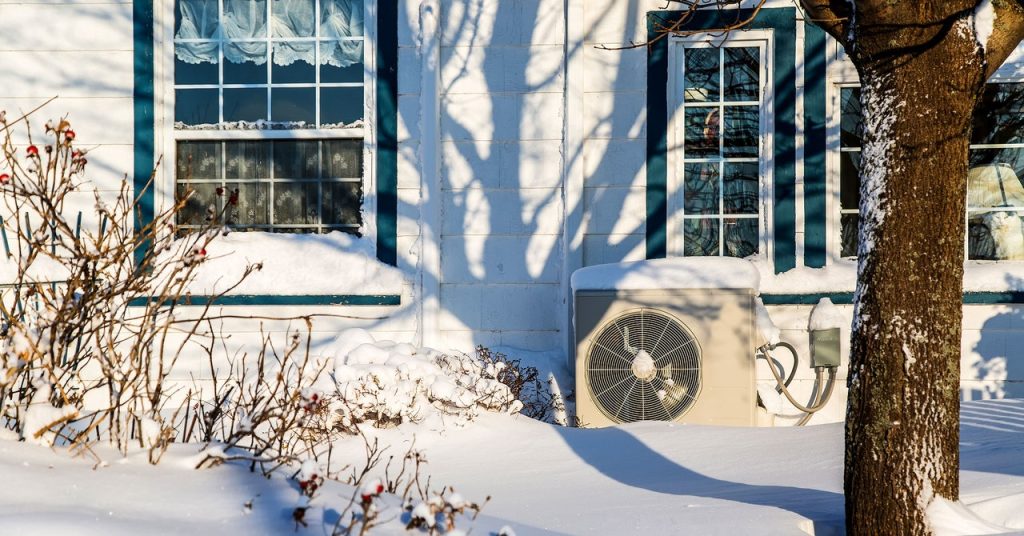The Magic of Heat Pumps: Efficient Home Heating and Cooling
Understanding the Basics of Heat and Energy
Heat pumps are gaining popularity as an energy-efficient alternative to traditional heating and cooling systems. They work by transferring thermal energy from one place to another, rather than generating heat directly. To understand how heat pumps function, it’s essential to grasp the concepts of kinetic energy, thermal energy, and the laws of thermodynamics.
Kinetic energy is the energy an object possesses due to its motion. In the context of air molecules, higher temperatures mean faster-moving molecules. Thermal energy, on the other hand, is the energy an object has due to its temperature. The amount of thermal energy depends on the object’s mass and its specific heat capacity, which is a measure of how much energy is needed to increase the object’s temperature.
According to the second law of thermodynamics, thermal energy only transfers from hot objects to cold objects, not the other way around. This means that when two objects at different temperatures come into contact, the hotter object will lose thermal energy while the colder object gains it until they reach the same temperature.
Heating Your Home with Heat Pumps
To increase the temperature of air in a house, you need to introduce an object with higher thermal energy. One simple way to do this is by bringing a large, sun-warmed rock inside. The thermal interaction between the hot rock and the cooler air will raise the air temperature. However, this method is only effective when the outside temperature is warm.
In colder weather, alternative methods are needed. Electric heaters, for example, use the principle of resistance heating. When an electric current passes through a wire, it encounters resistance, causing the wire to heat up. This hot wire can then transfer thermal energy to the surrounding air. Another common method is burning fuel, such as wood or natural gas, which releases energy through a chemical reaction with oxygen. However, this process also produces carbon dioxide, a greenhouse gas.
Cooling Your Home with Heat Pumps
Cooling the air in a house is more challenging than heating it, as there is no simple way to make things colder. However, the principle behind cooling can be demonstrated using a rubber band. When you stretch a rubber band, you add energy to it, increasing its temperature. If you allow the stretched rubber band to cool back to room temperature and then let it relax, it will become colder than room temperature.
Air conditioners and heat pumps use a similar principle. They employ a refrigerant, a fluid with a low specific heat and a very low boiling point, which circulates in a closed loop between the inside and outside of the building. The refrigerant is compressed, causing it to heat up, and then circulated through outdoor coils where it loses thermal energy to the atmosphere. The cooled refrigerant is then pumped back inside, where the pressure is reduced, causing it to expand and cool down further. As indoor air is blown over the cold coils, the refrigerant absorbs thermal energy from the air, cooling the room while heating up in the process. The cycle then repeats, continuously transferring thermal energy from inside to outside.
The Benefits of Heat Pumps
Heat pumps offer several advantages over traditional heating and cooling systems. They are generally more energy-efficient, as they move heat rather than generating it directly. Additionally, they don’t burn fuel, which means they can help reduce greenhouse gas emissions. By replacing an old gas furnace or air conditioner with a heat pump, you can not only contribute to a cleaner environment but also potentially lower your utility bills.



4 Comments
Heat pumps: the unsung heroes of eco-friendly temperature control, or overhyped gadgets? Let’s dive in and find out!
Sure, heat pumps sound cool, but can they really keep up when the weather turns extreme
Heat pumps: silently slaying energy bills or just a whisper in the HVAC world? Time to uncover the truth.
Heat pumps, more than just a fancy thermostat trick or real climate saviors? Let’s peel back the layers.